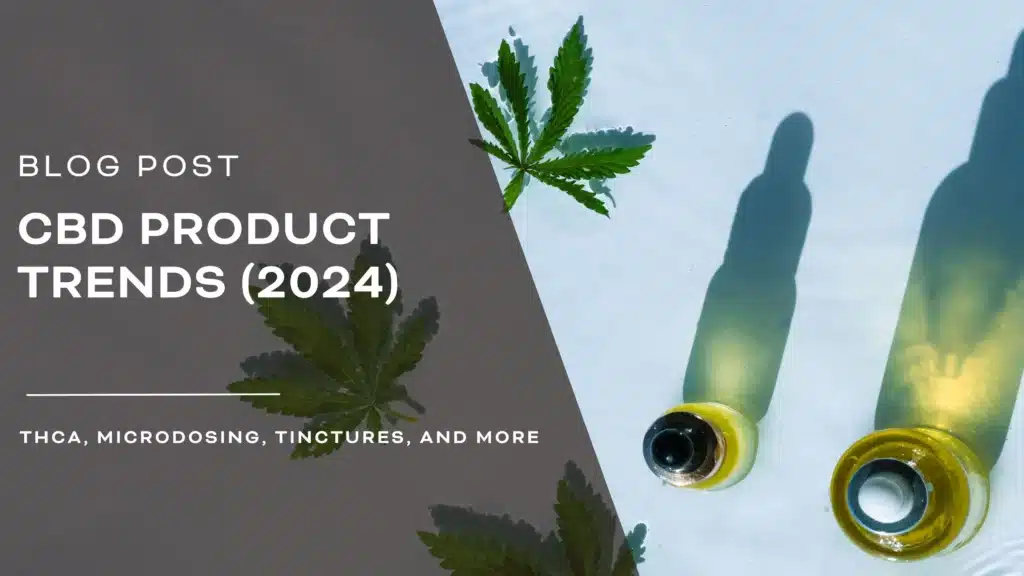
Table of Contents
With 2024 just around the corner, we’ve seen the start of fast-growing trends in the global cannabis market.
At the forefront, we see these cannabis trends quickly gaining popularity:
- The rise of THCA (tetrahydrocannabinol acid) product offerings
- Mental health microdosing of THC and CBD products
- The reboot of CBD tincture popularity
- The integration of technology into cannabis wellness routines
This article explores these trends in-depth, highlighting their benefits, applications, and the possible reasons behind their rising popularity.
1. Exploring the Potential of THCA in Wellness
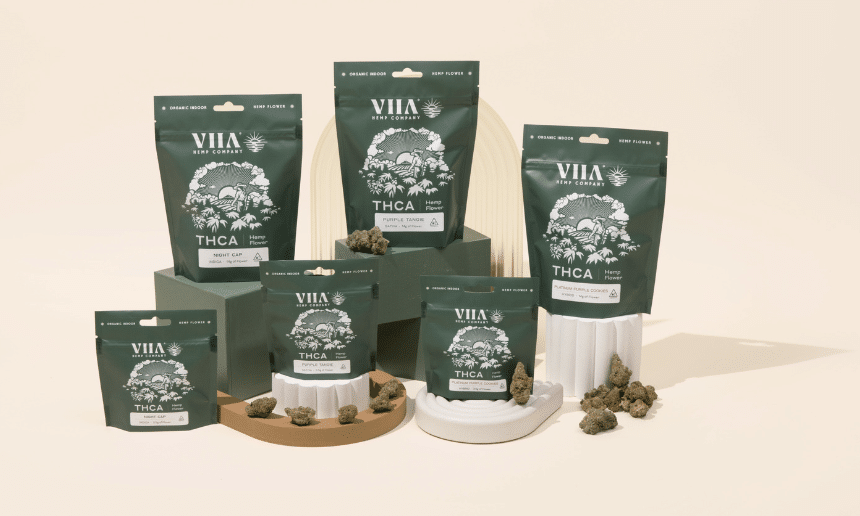
At cannabis conferences, you’ll see a lot of hype surrounding THCA and other minor cannabinoids, and for good reason.
With more research coming out about the potential wellness benefits of cannabis, we’re seeing more people willing to try CBD products and experiment with other active components from hemp.
THCA (tetrahydrocannabinolic acid) is the precursor to its most famous counterpart, THC (tetrahydrocannabinol) — the most abundant cannabinoid in marijuana, responsible for its psychoactive effects.
Chemically, THCA is very similar to THC. It’s most abundant in raw cannabis flowers, and it transforms into THC through decarboxylation, which occurs when the compound is exposed to heat (smoking, vaping, cooking).
However, unlike THC, THCA is non-psychoactive, meaning it doesn’t produce the ‘high’ associated with cannabis use when it’s used in its raw, unheated form in tincture.
Because of its non-intoxicating nature, THCA often faces fewer regulations.
Health Benefits of THCA
Recent studies are starting to show some interesting things about THCA and its wellness benefits. It’s getting a lot of buzz in both the cannabis world and among medical professionals.
Let’s look closely at some research surrounding THCA’s potential health perks.
Please remember that most of these studies are in their early stages, and we’re by no means saying that any nonprescription THCA product can cure, treat, or mitigate any disease or condition.
- Neuroprotective properties: Early studies indicate potential neuroprotective effects of THCA [2].
- Anti-proliferative research: Initial studies have explored the anti-proliferative properties of THCA, particularly in the context of cancer cells, but definitive conclusions haven’t been reached yet [3].
- Nausea and appetite support: There’s an ongoing investigation into whether THCA can affect nausea and appetite like THC [4].
- Potential anti-spasmodic effects: Anti-spasmodic compounds relax muscles, reducing involuntary muscle contractions. Like THC and CBD, THCA is speculated to have anti-spasmodic effects, and research is continuing in this space [5].
THCA Vs. THC: At A Glance
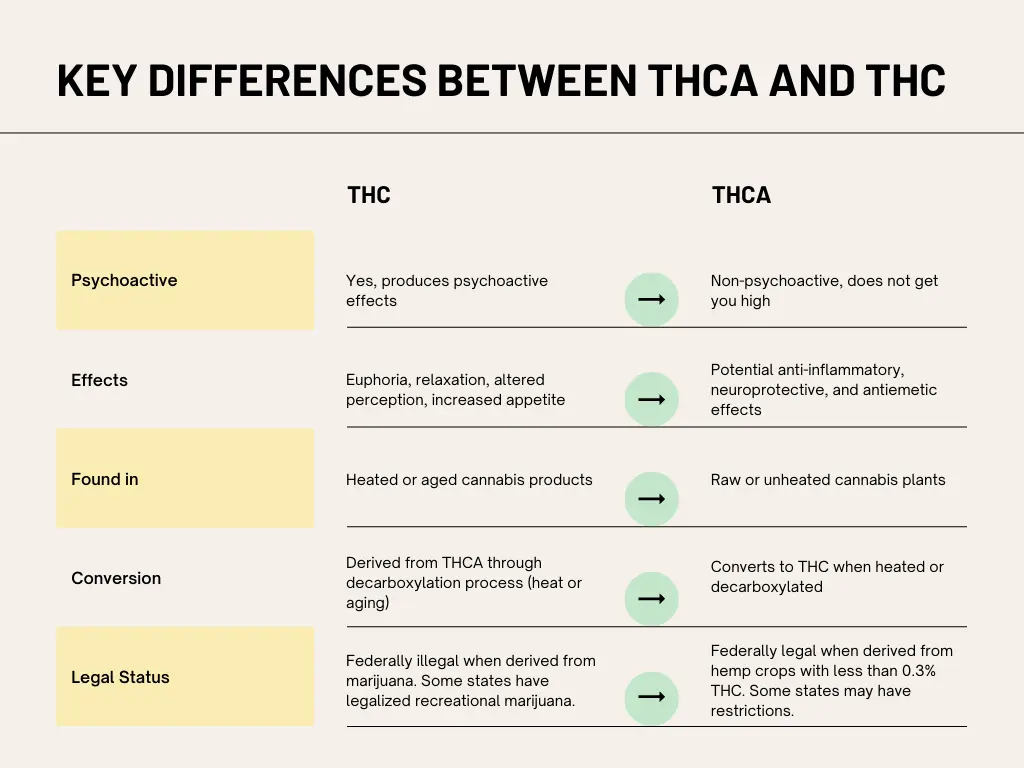
It’s common belief that THC needs to be “activated” with heat to produce its psychoactive effects. And this is somewhat true.
In its raw form — plucked right from nature — the cannabis plant doesn’t have much THC. Instead, it has a high concentration of THCA, which doesn’t do much until you heat it — like when you’re smoking, vaping, or cooking it.
This heat triggers a chemical change, turning THCA into THC.
This absence of psychoactivity in THCA allows it to be considered for different therapeutic uses, particularly for those who seek the potential benefits of cannabinoids without the psychoactive effects.
And then there’s the law. Generally, THCA is on the relaxed side of legal issues compared to THC, mainly because it’s not about the buzz.
So, even though THCA and THC come from the same plant, they’re markedly different in how they work, what they’re used for, and the legalities around them.
A Trend in THCA Product Offerings in 2024
Because of the emerging research in minor cannabinoids and growing interest in recreational cannabis use, we’re starting to see a predicted rise in THCA product offerings in the wellness and health markets.
A significant area of growth is in the development of sublingual THCA drops, which are poised to become a prominent feature in the cannabis-based wellness industry.
Sublingual THCA drops offer a unique method of delivery that is both discreet and efficient.
The sublingual method, involving placing drops under the tongue, allows for rapid absorption of THCA into the bloodstream.
Cannabinoids bypass the digestive system, reducing the time the compound takes effect and increasing its bioavailability. Moreover, this method avoids the psychoactive effects typically associated with THC because it doesn’t require heat.
Market Trends and Consumer Demand
The demand for non-psychoactive, wellness-oriented cannabis products is on the rise, and THCA fits perfectly into this niche.
Consumers are increasingly seeking natural alternatives for health and wellness, and THCA products, especially sublingual drops, meet this demand by offering potential health benefits without the high associated with THC.
THCA Flowers in The Legal Market
THCA flower refers to the raw, unprocessed cannabis flower that is high in tetrahydrocannabinolic acid (THCA) and low in tetrahydrocannabinol (THC).
This distinction is crucial in regions where THC is heavily regulated or illegal, as THCA in its raw form does not produce psychoactive effects and often falls into a different legal category.
THCA flower represents a legal loophole for consumers in areas with strict THC regulations.
Since THCA is non-psychoactive and technically contains less than (0.3% THC), the flower can be legally sold and possessed in certain jurisdictions where THC products are not allowed.
However, savvy cannabis users know that all it takes is a little bit of heat to reap the benefits of THC from THCA flower. This transformation upon heating provides a legal means for consumers to access cannabis that can result in typical marijuana effects.
2. CBD and THC Microdosing
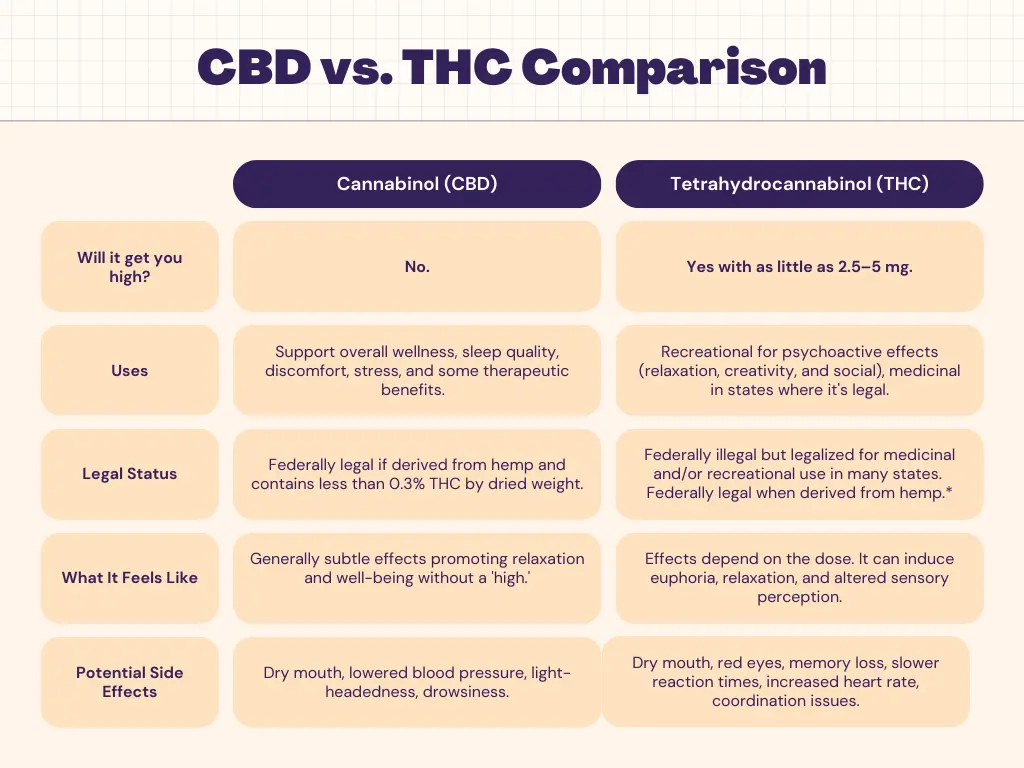
The practice of microdosing, particularly with compounds like CBD (cannabidiol) and THC, has become a significant trend in the realm of mental health and wellness. Microdosing involves taking minimal amounts of a substance — just enough to reap its benefits without experiencing a full-blown psychoactive effect, especially when using THC to microdose.
The Potential Benefits of Microdosing
While there’s a lot of buzz and some early research on microdosing CBD and THC’s potential, it’s important to remember that this is still pretty new territory.
The science isn’t all in yet, and a lot of what we hear about how effective and safe it is for mental health still needs to be backed up by solid, in-depth research. So, while it’s an exciting area to explore, if you choose to experiment with microdosing for mental health, you should tread carefully.
That being said, here are some of the potential benefits associated with microdosing cannabinoids:
- Stress management
- Support focus and creativity
- Improved overall sense of well-being
- Support minor discomforts
Perhaps the best way to take advantage of this trend is with Microdose Gummies, which provide pre-measured doses of cannabinoids (THC and CBD) into approachable bite-sized pieces, allowing consistency and ease of use.
3. Re-Emergence of CBD Tincture Trends
There are so many CBD products available in the expanding cannabis industry, from gummies, capsules, bath bombs, skincare, and more.
This one might be a bit surprising for cannabis trends — but as we move into 2024, we’re starting to see a significant resurgence in cannabis tinctures, including CBD, THC, CBG, CBN, and other cannabinoid variants.
This revival could be attributed to the growing awareness and appreciation of the unique benefits that tinctures offer in the realm of herbal wellness and cannabis-based therapies.
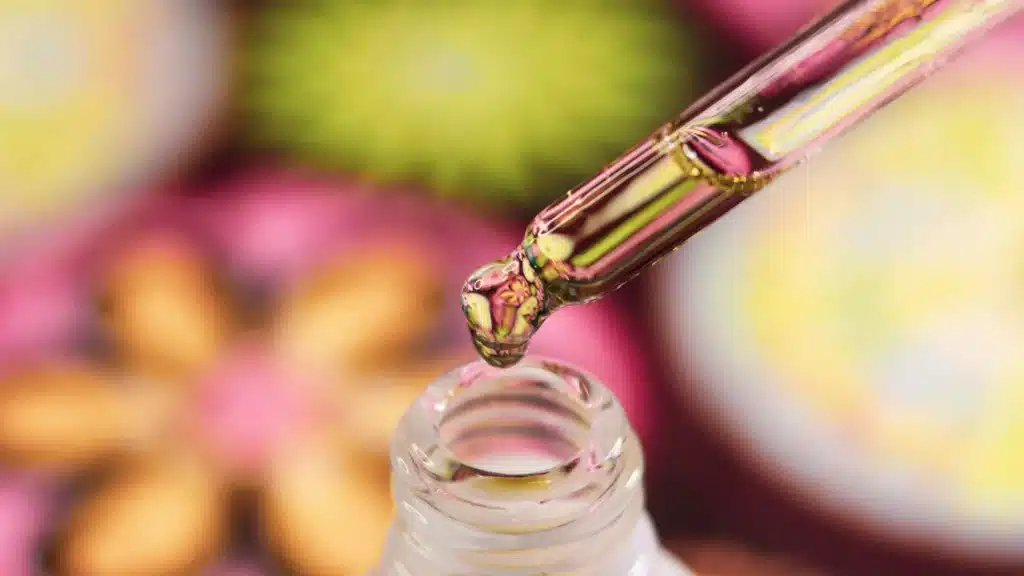
Cannabis tinctures come in various formulations, with CBD, THC, or a combination of both catering to a wide range of preferences and needs. This versatility makes them an attractive option for both new and experienced users.
Tinctures are user-friendly, with droppers that allow for precise dosing. This precision is particularly beneficial for those who are mindful of their intake and are looking for consistent results or want to try their hand at microdosing cannabinoids.
Unlike smoking or vaping, tinctures are discreet and can be used almost anywhere without drawing attention. They’re also portable and don’t require any additional equipment.
The return to prominence of cannabis tinctures in 2024 is fueled by a greater acceptance of cannabis in wellness circles, advancements in extraction and formulation technologies, and a growing body of anecdotal and research-based evidence supporting their benefits.
It’s clear that people want natural and holistic remedies, and tinctures offer a convenient, effective, and traditional way to leverage the potential wellness properties of cannabis.
General Wellness Trends 2024
In 2024, we’ll see more technology integration in health and advocating for more accountability from CBD brands. These trends reflect a deeper understanding that wellness isn’t just about isolated solutions but a comprehensive, interconnected approach.
Integration of Technology
Wearables and health apps are the new go-to’s for keeping up with your wellness game.
They’re not just counting your steps anymore — these devices give you more information on your heart rate, how well you’re sleeping, your stress levels, and even checking how much oxygen is in your blood, helping you make more informed decisions on your health.
By pairing wearables and health apps with your CBD routine, you get insight into how CBD products affect your sleep or stress levels.
Focus on Quality and Transparency From CBD Companies
People are interested in CBD now more than ever, but they’re not just grabbing anything off the shelf. They want to know the nitty-gritty — like where the hemp comes from, how it’s made, and what else is really in it.
This push for the real deal is changing how CBD companies conduct their businesses, and it’s for the good.
Consumers are becoming more savvy with their shopping. They’re checking to see how potent the CBD is and making sure it’s free from nasty contaminants like pesticides and residual solvents, and they want it all upfront. This quality assurance is hopefully leading to elevated standards in the CBD market with more reliable, safe, and effective products.
This is beneficial for consumers and the industry as a whole, as it promotes better practices and contributes to the long-term sustainability and credibility of the CBD.
Combining CBD with Other Supplements
A noticeable trend in the wellness industry is the integration of CBD with other health supplements, such as vitamins, minerals, and herbal extracts.
It’s all about getting the best of everything — mixing CBD with other natural compounds to boost your overall well-being and achieve more effective targeted health solutions.
For instance, CBD paired with Vitamin B12 might offer heightened energy and mood stabilization support. Incorporating herbal extracts like ashwagandha, turmeric, or ginger with CBD creates blends that leverage the unique benefits of each ingredient for stress relief or strengthened immune function.
As this trend keeps growing, we will see more of these unique combinations that cater to various health needs and preferences.
The Takeaway: Cannabis Trends in 2024

The trends we’ve explored — from the nuanced applications of THCA and the precision of microdosing THC and CBD to the resurgence of herbal tinctures and the integration of technology in personal health — all point towards a future where wellness is more personalized, informed, and innovative.
We’re not seeing CBD sales slowing down anywhere soon. Still, we’re seeing a shift towards a more holistic view of health, where understanding and using natural compounds like cannabis in synergy with technology may help to enhance our overall well-being.
This shift in the wellness industry empowers individuals with more choices and opens new doors to how we perceive and achieve health.
Resources:
- Nallathambi, R., Mazuz, M., Ion, A., Selvaraj, G., Weininger, S., Fridlender, M., … & Koltai, H. (2017). Activity in colon models is derived from δ9-tetrahydrocannabinolic acid that interacts with additional compounds in cannabis extracts. Cannabis and cannabinoid research, 2(1), 167-182.
- Kim, J., Choi, P., Park, Y. T., Kim, T., Ham, J., & Kim, J. C. (2023). The Cannabinoids, CBDA and THCA, Rescue Memory Deficits and Reduce Amyloid-Beta and Tau Pathology in an Alzheimer’s Disease-like Mouse Model. International Journal of Molecular Sciences, 24(7), 6827.
- McPartland, J. M., MacDonald, C., Young, M., Grant, P. S., Furkert, D. P., & Glass, M. (2017). Affinity and efficacy studies of tetrahydrocannabinolic acid A at cannabinoid receptor types one and two. Cannabis and cannabinoid research, 2(1), 87-95.
- Rock, E. M., Kopstick, R. L., Limebeer, C. L., & Parker, L. A. (2013). Tetrahydrocannabinolic acid reduces nausea‐induced conditioned gaping in rats and vomiting in S uncus murinus. British journal of pharmacology, 170(3), 641-648.
- Jones, É., & Vlachou, S. (2020). A critical review of the role of the cannabinoid compounds Δ9-tetrahydrocannabinol (Δ9-THC) and cannabidiol (CBD) and their combination in multiple sclerosis treatment. Molecules, 25(21), 4930.

Delta 8 THC is a new addition to the cannabinoid market and many people have questions or are unaware of its potential effects. How long does delta 8 THC stay in your system? Are there any long-term effects or side effects? Will delta 8 THC cause most drug tests to fail?





